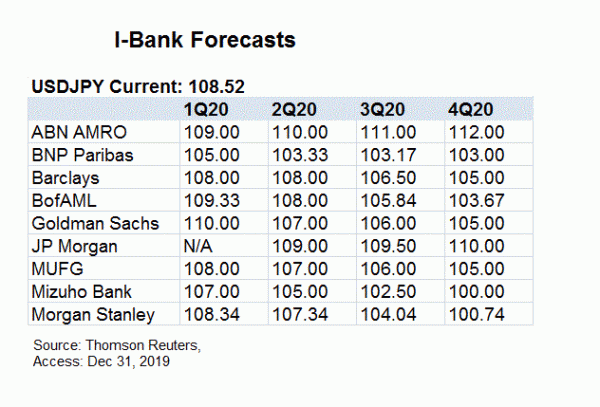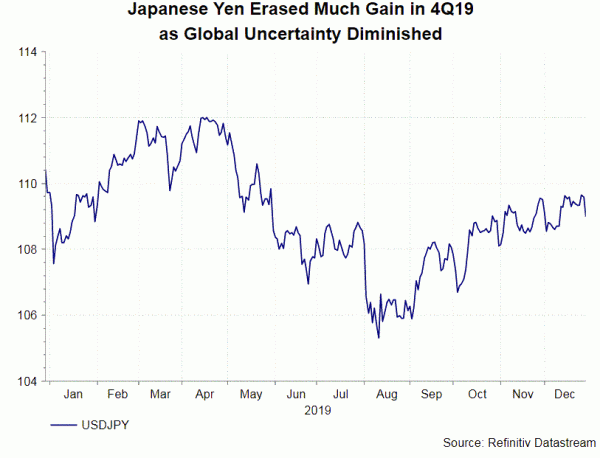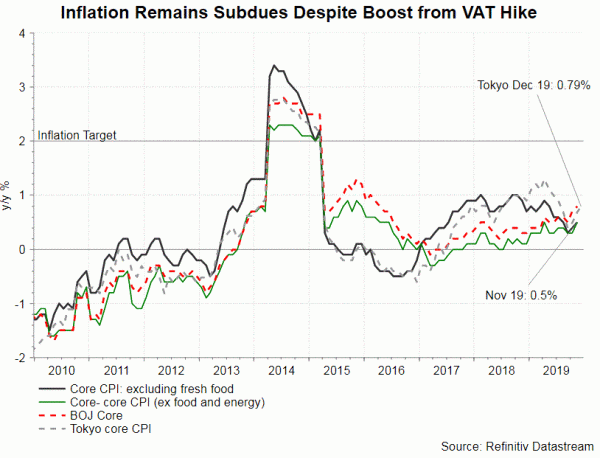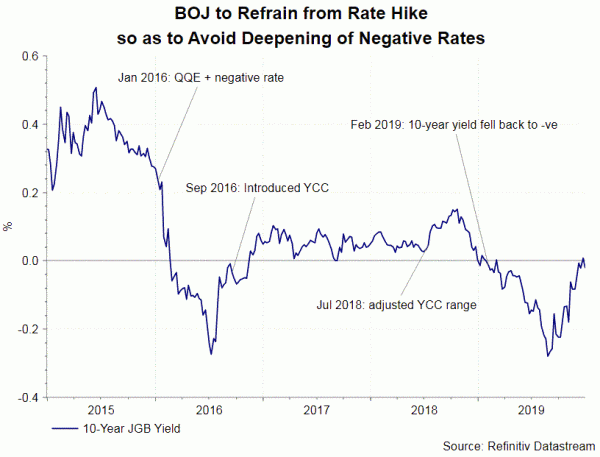US-China trade war, Brexit drama and concerns over global economic slowdown have resulted in a volatile FX market for most of 2019. Risk aversion raised demand for safe-haven assets, such as Japanese yen. USDJPY declined to as low as 105 in mid-August, recording a loss of about 4% in the first 8 months of the year. Yet, a reversal was seen in the last quarter of the year. This was driven by a shed of light in US-China trade negotiations, culminating in agreement of Phase I deal, Conservatives’ landslide victory in UK elections and eventual approval of Brexit deal and Fed’s pause in rate cut. We expect market optimism to carry forward in the first half of the new year, supporting USDJPY. However, reemergence of economic and geopolitical uncertainties later in the year could raise demand for safe-haven, unwinding of carry trades and repatriations of foreign investments by Japanese investors, eventually lifting the yen.
 Risk appetite reduces safe haven demand in first half
Risk appetite reduces safe haven demand in first half
Agreement of Phase I trade deal between US and China, Conservatives’ landslide victory of UK elections and the subsequent approval of the Brexti deal in the parliament earlier this month have reduced much of global uncertainty for now. We expect risk appetite can carry on for one to two more quarters. However, problems of both US-China trade war and Brexit should resurface later in 2020.
Although the Phase I agreement will eventually be signed, this has not settled the more contentious issues that have triggered the trade war. We do not expect the agreement will contain details of how China manages protection of intellectual property, forced technology transfers, further opening of Chinese markets and currency manipulation. We believe US President Donald Trump will resume pressuring China through tariff threats later in the year.
Meanwhile, UK’s exit from the EU on January 31 marks the beginning of the next phase of Brexit negotiations. Practically, this is a more important phase than the previous one as future trade relations will be negotiations. UK Prime Minister Boris Johnson insists that the transition period will end on December 31, 2020, suggesting that the UK and the EU will have less than a year to negotiate. Reemergence of Brexit uncertainty should unnerve market, lifting demand of safe-haven assets like yen.
Remains an Attractive Funding Currency
Japanese yen has been a popular funding currency. It will remain so in 2020 given its lower yields. Traders borrow yen at low cost for high-yield investments in other currencies. Such carry trade activities remains vibrant at times of market optimism, contributing to a softer yen against USD in early 2020.
BOJ Likely Leaves Policy Unchanged
Fiscal stimulus would shoulder the burden of boosting the economy. Although both economic growth and inflation should remain sluggish in 2020, BOJ would likely refrain from cutting policy rate. Negative interest rates have been detrimental to profitability of the banking sector. In the December meeting, the members voted 7-2 to maintain its present monetary policy stance. BOJ also broadly maintained the overall assessment of economic conditions. It attributed the recent decline in industrial production to temporary factors – natural disasters while noting that public investment “increased moderately”. Meanwhile, the members noted that annual growth of inflation is at around 0.5%, slightly improved from 0-0.5% estimated in October.
A dovish tone in October was likely a tactic to curb the strength of Japanese yen. Should Japanese yen appreciate and approach 100 against US dollar, BOJ might have to resume easing. This is not only a psychological level, but also a break-even rate of most Japanese exporters.

















